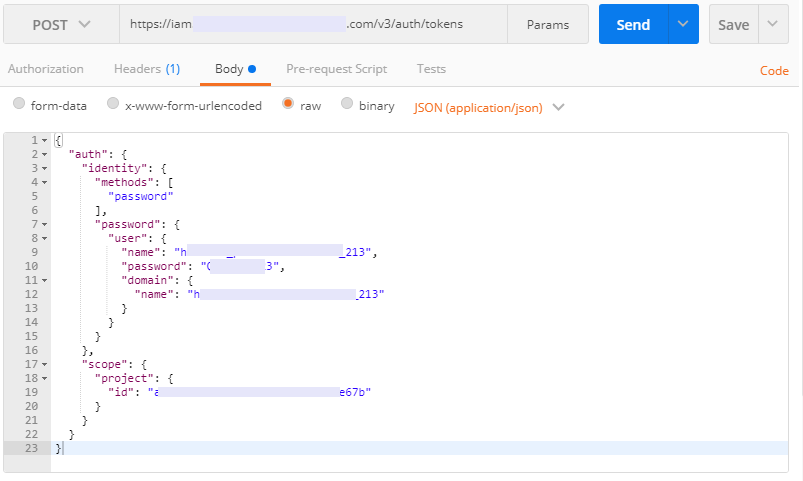Token Authentication¶
Scenario¶
If API requests are authenticated using tokens, the request header must contain X-Auth-Token (token information).
This section describes how to call an API to complete token authentication.
Procedure¶
Send POST https://IAM endpoint/v3/auth/tokens to obtain the endpoint of IAM and the region name in the message body.
An example request is as follows:
Note
Replace the texts in italic with actual ones. For details, see Identity and Access Management API Reference.
Log in to the management console, click your username in the upper right corner, and choose My Credential from the drop-down list. On the My Credential page, obtain your username, domain name, and project ID.
{ "auth": { "identity": { "methods": [ "password" ], "password": { "user": { "name": "username", //Obtain your username from the My Credential page. "password": "password", "domain": { "name": "domainname" //Obtain your domain name from the My Credential page. } } } }, "scope": { "project": { "id": "0215ef11e49d4743be23dd97a1561e91" //Obtain your project ID from the My Credential page. } } } }
2. Obtain the token. For details, see section "Obtaining the User Token" in the Identity and Access Management API Reference. If the request is successful, the value of the X-Subject-Token header in the response is the token.
3. Call a service API, add the X-Auth-Token header with the token obtained in 2.

